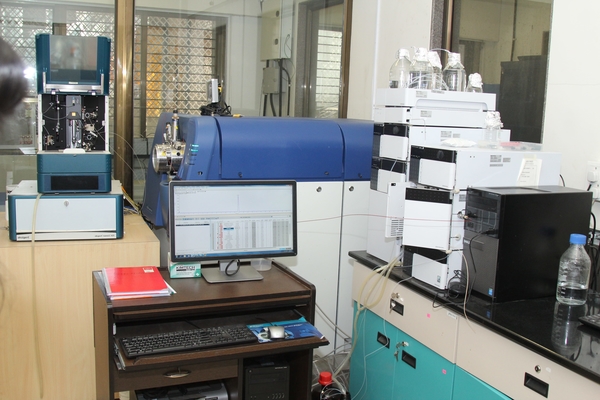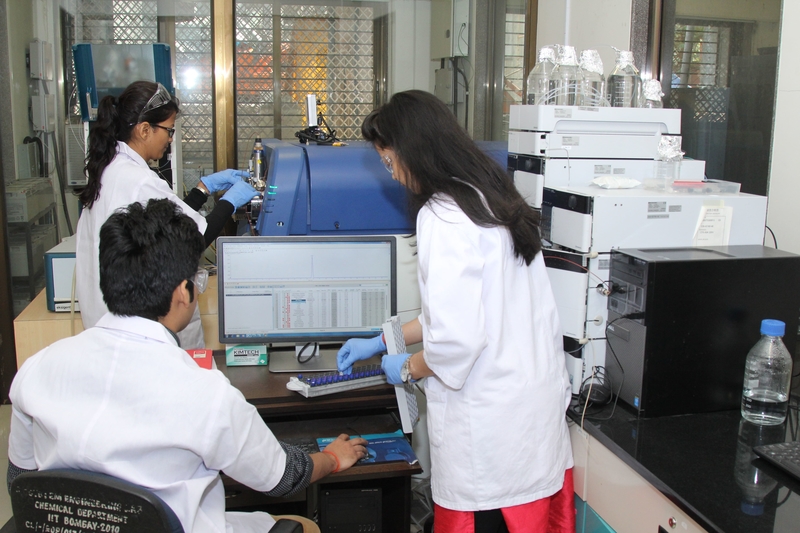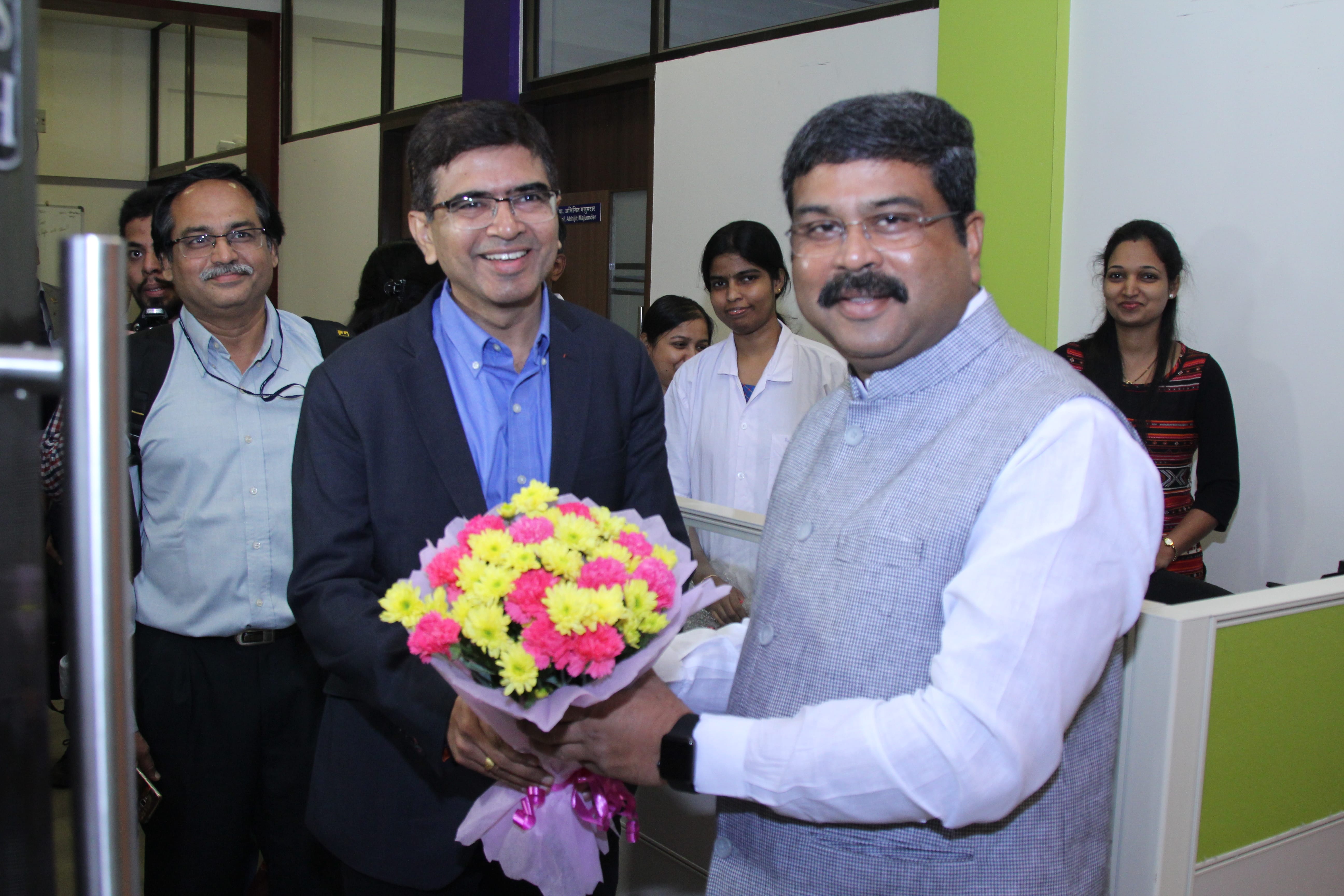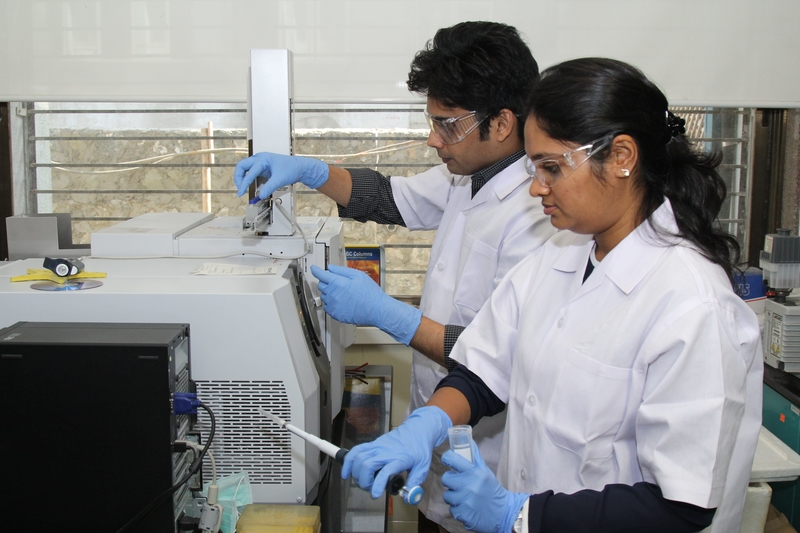New research from the Wangikar lab
Mehta, Kanika, et al. Elevated carbon dioxide levels lead to proteome-wide alterations for optimal growth of a fast-growing cyanobacterium, Synechococcus elongatus PCC 11801.
The environmental considerations attributing to the escalation of carbon dioxide emissions have raised alarmingly. Consequently, the concept of sequestration and biological conversion of CO2 by photosynthetic microorganisms is gaining enormous recognition. In this study, in an attempt to discern the synergistic CO2 tolerance mechanisms, metabolic responses to increasing CO2 concentrations were determined for Synechococcus elongatus PCC 11801, a fast-growing, novel freshwater strain, using quantitative proteomics. The protein expression data revealed that the organism responded to elevated CO2 by not only regulating the cellular transporters involved in carbon-nitrogen uptake and assimilation but also by inducing photosynthesis, carbon fixation and glycolysis. Several components of photosynthetic machinery like photosystem reaction centers, phycobilisomes, cytochromes, etc. showed a marked up-regulation with a concomitant downshift in proteins involved in photoprotection and redox maintenance. Additionally, enzymes belonging to the TCA cycle and oxidative pentose phosphate pathway exhibited a decline in their expression, further highlighting that the demand for reduced cofactors was fulfilled primarily through photosynthesis. The present study brings the first-ever comprehensive assessment of intricate molecular changes in this novel strain while shifting from carbon-limited to carbon-sufficient conditions and may pave the path for future host and pathway engineering for production of sustainable fuels through efficient CO2 capture.
Sengupta, Annesha, et al. Fine-Tuning Native Promoters of Synechococcus elongatus PCC 7942 To Develop a Synthetic Toolbox for Heterologous Protein Expression.
The cyanobacterium Synechococcus elongatus PCC 7942 is a potential photosynthetic cell-factory. In this study, two native promoters from S. elongatus PCC 7942 driving the expression of abundant cyanobacterial proteins phycocyanin (PcpcB7942) and RuBisCO (Prbc7942) were characterized in relation to their sequence features, expression levels, diurnal behavior, and regulation by light and CO2, major abiotic factors important for cyanobacterial growth. PcpcB7942 was repressed under high light intensity, but cultivation at higher CO2 concentration was able to recover promoter activity. On the other hand, Prbc7942 was repressed by elevated CO2 with a negative regulatory region between 300 and 225 bp. Removal of this region flipped the effect of CO2 with Rbc225 being activated only at high CO2 concentration, besides leading to the loss of circadian rhythm. The results from this study on promoter features and regulation will help expand the repertoire of tools for pathway engineering in cyanobacteria.
Sengupta, Annesha, et al. The effect of CO2 in enhancing photosynthetic cofactor recycling for alcohol dehydrogenase mediated chiral synthesis in cyanobacteria.
The light harvesting photosystem in cyanobacteria offers a potential pathway for the regeneration of the nicotinamide cofactor NADPH, thereby facilitating the application of cyanobacteria as excellent whole cell biocatalysts in oxidoreductase-mediated biotransformation. The use of cyanobacterial metabolism for cofactor recycling improves the atom economy of the process compared to the commonly employed enzyme-coupled cofactor recycling using enzymes such as glucose dehydrogenase. Here we report the asymmetric conversion of acetophenone to chiral 1-phenylethanol by recombinant Synechococcus elongatus PCC 7942 whole cell biocatalyst that expresses the NADPH dependent L. kefir alcohol dehydrogenase. Besides light, it was observed that carbon dioxide levels play a critical role in improving the bioconversion efficiency possibly due to the enhanced growth rate and improved cofactor availability at elevated CO2 levels. Complete reduction of acetophenone to optically pure (R)-1-phenylethanol at 99% enantiomeric excess was achieved within 6 h with a relatively low cell density of 0.66 g/l by coupling optimum light and CO2 levels and without the need for a co-substrate.
Prasannan, Charulata B., et al. Mass Isotopologue Distribution of dimer ion adducts of intracellular metabolites for potential applications in 13C Metabolic Flux Analysis.
13C Metabolic Flux Analysis (13C-MFA) is a powerful tool for quantification of carbon flux distribution in metabolic pathways. However, the requirement to obtain accurate labeling patterns, especially for compounds with low abundance, poses a challenge. Chromatographic separation and high sensitivity of the modern mass spectrometers (MS) alleviate this problem to a certain extent. However, the presence of derivatives such as in-source fragments, multimer ion adducts, and multiply charged ions result in reduced intensity of the molecular ion. While multimer ion adducts have been reported in the field of metabolomics, their presence is considered undesirable in quantitative studies. Here, we demonstrate a novel application of dimer ion adducts in calculating the mass isotopologue distribution (MIDs) of the corresponding monomer ions for public domain and in-house generated datasets comprising of 13C-labeling time-course experiments. Out of the 100 standard compounds analyzed, we could detect multimer ion adducts in 24 of the intermediate metabolites. Further, a subset of these multimer ions were detected in all the biological samples analyzed. Majority of these ion adducts were either not detected in the original study or labeled as a putative feature. Regression analysis was performed to estimate the monomer MIDs from those of the dimer. This resulted in accurate estimation regardless of the biological system, chromatographic method, the MS hardware, or the relative abundance of the dimer ion. We argue that this analysis may be useful in cases where satisfactory data cannot be extracted from the chromatographic peaks of the monomer ions.
Fresh off the press:
Cyanobacteria are attractive candidates to explore the bio-production of a wide variety of chemicals. A systems biology approach that integrates the knowledge gleaned from available synthetic biology tools, molecular techniques and -omics databases could contribute to the expansion of the repertoire of existing chassis strains and allow the successful use of model and non-model strains of cyanobacteria as photosynthetic cell factories.
Check out our mini-review for "Current Opinion on Biotechnology."
Poster winners at the DBT Annual conference on Bioenergy:
Minal Nenwani and Vaibhav Srivastava bagged first and second place poster awards at this year’s conference in Kolkata. Congratulations!


























